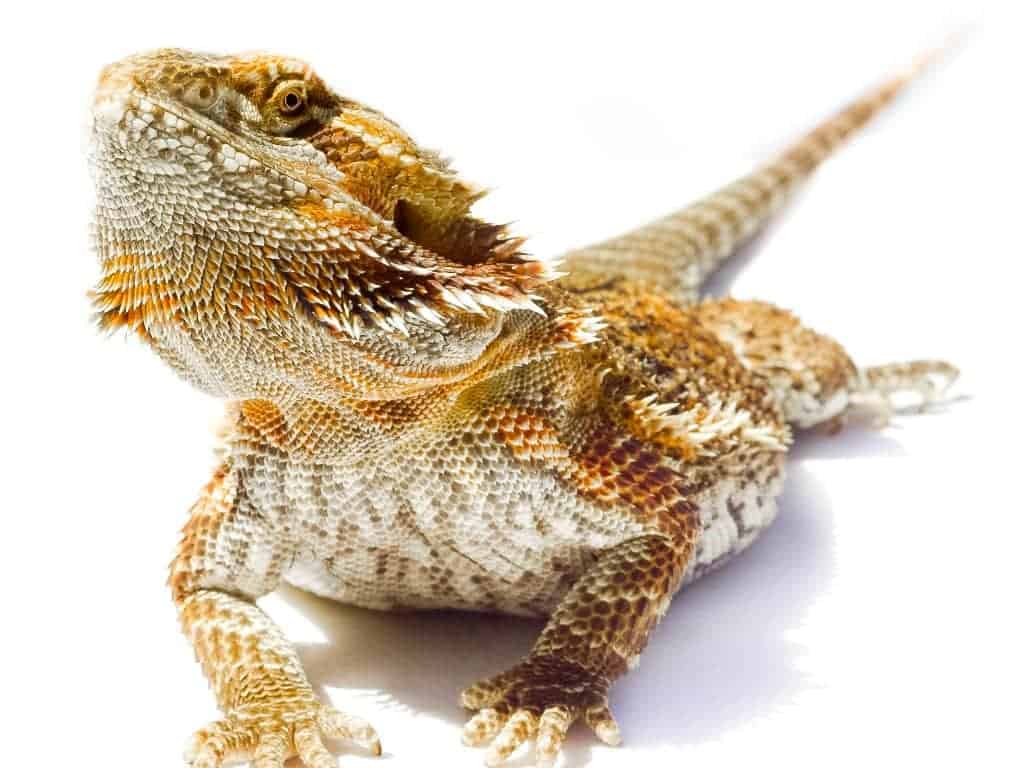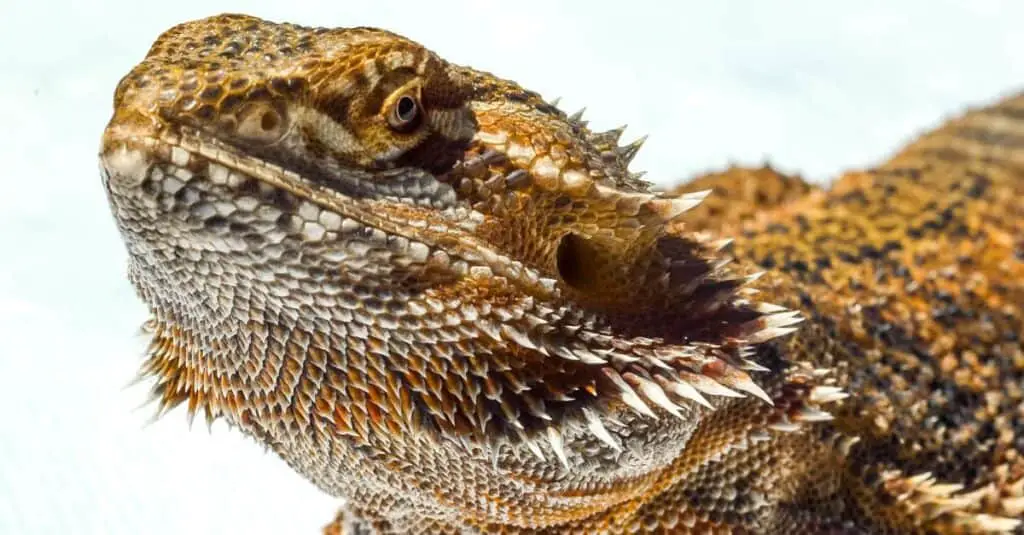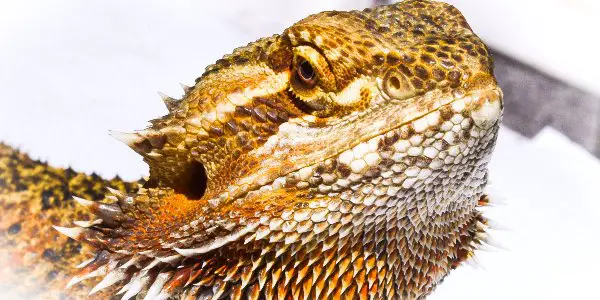Bearded dragons are among the most popular reptiles people often choose for house pets. Interestingly, some pet owners and breeders decided they wanted to get bigger beardies. As a result, the German giant bearded dragons were born.
German giant bearded dragons are part of the Pogona genus of reptiles with six known species. However, German giant bearded dragons are not recognized as an entirely new species. Instead, they are oversized bearded dragons intentionally bred from large existing and recognized species.
If you’re interested in raising this larger type of bearded dragon but unsure about how to properly care for them, read on. This article will take you through the full guide of what German giant bearded dragons are and what they need to thrive.

The Origin of the German Giant Bearded Dragon
Bearded dragons are reptiles famous for the characteristic spikes on their necks, otherwise referred to as their “beard.” These reptiles are native to Australia, which has prohibited the export of such animals since the 1960s.
However, some smugglers successfully brought the animals to Europe, particularly in Germany, despite the laws against it, and they eventually reached the US. In the process, breeders have successfully created numerous variants or morphs.
One of these bearded dragon morphs is the German giant bearded dragon, intentionally bred from large Pogona species. However, German giant bearded dragons aren’t taxonomically recognized as a new species regardless of their popularity.
Currently, the IUCN Red List recognizes only six species of bearded dragons, and they are of Least Concern (LC). It means that they have safely high numbers in the wild.
These recognized species include the following:
- Pogona barbata
- Pogona henrylawsoni
- Pogona microlepidota
- Pogona minor
- Pogona nullarbor
- Pogona vitticeps.
Among these six species, the Pogona barbata and the Pogona vitticeps have the potential to be the largest, with full-grown adults reaching up to 24 inches (61 cm) in length and 600 grams (1.32 lb) in weight.
Why the Giant German Variety Is Not a Separate Species?
Breeders selected the largest bearded dragons and paired them up for mating for higher chances of producing larger offspring. The efforts resulted in the German giant bearded dragon being significantly bigger and heavier than either species.
Below is a list of reasons why the German giant bearded dragon morph has not yet been recognized as a separate species:
- The morph doesn’t always produce equally large offspring, lacking consistency.
- German giant bearded dragons don’t usually have a similar distinct appearance due to varying origins (P. barbata or P. vitticeps).
- They don’t have the genetic identity and consistency that set them apart from other species.
- There is no reproductive isolation, which prevents interbreeding with other species due to genetic and physiological limitations.
Because of the reasons cited above, it’s unlikely that the German giant bearded dragons will become recognized as an entirely new species of bearded dragons anytime soon.
In addition, many breeders still use their own formula to develop oversized bearded dragons, and this practice remains unregulated.
Where Can I Source German Giant Bearded Dragons?
The German giant bearded dragons are not available in the wild or may not even thrive long enough to grow as big when exposed to natural conditions.
They grow so big because they receive a steady supply of food to support or even boost their growth because they are bred in captivity. In addition, there are no predators that could threaten them. They also typically live in solitary confinement, so there are no other beardies who will compete with them for food.
You can source German giant bearded dragons from reputable breeders online or in pet stores. Some sellers may falsely advertise their beardies as the German giant morph, so you have to be careful and do your research when choosing a breeder to buy your future pet.
Since it is challenging to guarantee that the hatchling can grow big enough to be called a German giant beardie, it is best to find one roughly one year old. The giant beardie should be around 80 – 100% of its full growth potential by that age.
However, because of the difficulty of producing giant beardies, you must be prepared to pay more. Prices for adult German giant beardies can range from $400 – $500. It can even go higher for those with rare colors like yellow or red.

The Appearance of German Giant Bearded Dragons
As the name implies, the German giant bearded dragons are among the largest beardies in captivity. Although sizes may vary, there are some size standards giant beardies should meet.
Size
Regardless of their species of origin, German giant bearded dragons are renowned for their larger size and weight than average bearded dragon. The length from the tip of their nose to the end of their tail should range from 25 – 30 inches (63.5 – 76.2 cm) or longer to qualify as a giant beardie.
Adult giant beardies typically weigh between 500 – 800 grams (1.1 – 1.8 lb). Meanwhile, unreported occurrences of larger and heavier giant beardies are possible.
Color
German giants inherit the color patterns of their parent species. For instance, P. barbata dragons are usually gray or red. On the other hand, P. vitticeps have different colors, such as yellow, orange, or red.
Breeders often pair up a male and a female giant beardie with different colors to get hatchlings with unique color patterns.
Spikes
Like most bearded dragons, German giant beardies also have spikes. However, the appearance of spikes can vary widely from one beardie to another. Even beardies from the same species may have different-looking spikes, with some pointing outwards while others are pointing downwards.
Some beardies may even have fewer spikes than others. Growing German giant beardies in captivity may contribute to this as the lack of threats can render the spikes useless. Also, various mutations can occur from selective breeding.
Dietary Requirements of a German Giant Bearded Dragon
The dietary requirements of a German giant bearded dragon are pretty much the same as other naturally occurring beardies. If anything, the only difference would be the amount to address the difference in size.
Like other bearded dragons, German giant beardies are omnivores, which means they can eat insects and plants like leafy vegetables, fruits, and flowers.
Young German giant beardies will need a significant amount of calcium for their growth. They can get this essential nutrient from green leafy vegetables, such as:
Beardies enjoy a variety of fruits such as melon, apple, and berries. However, avoid feeding them the following:
- Rhubarb
- Citrus fruits
- Avocado
- Onion.
You also need to provide your young bearded dragons with enough insects as their protein source. To give a calcium-rich diet to your beardies, you can feed the insects with calcium-rich leafy vegetables. It can help ensure your pet beardies can receive the nutrients they need from insects with the extra benefit of added calcium.
Best insects for the giant bearded dragon include:
- Crickets
- Superworms
- Dubia Roaches
- Earthworms
- Waxworms.
Remember that wild-caught insects may carry parasites or chemical toxins that may be lethal to your beardie. Thus you should acquire your feeding stock from a reputable dealer or breed them yourself in a clean and safe environment.
Feeding During Brumation
Another essential thing to consider regarding your giant bearded dragon diet is when they slow down during the cold months. Bearded dragons typically brumate or become less active during winter. Because of their inactivity, they may require less food.
Nonetheless, you should ensure that they are still well-fed and hydrated to prevent them from losing significant weight during the brumation period. Give your beardie a steady supply of fresh drinking water.
You can also give them a small serving of greens once every two days and remove leftovers. Next time, you may adjust the amount based on their consumption and give them a smaller serving.
They won’t need as much nutrition as during the warm season because they tend to sleep most of the time during brumation. Nonetheless, food and water should still be available when your beardies need them.
Environmental Requirements of a German Giant Bearded Dragon
Bearded dragons originally came from Australia. Depending on the species, these reptiles can grow in a wide range of environments, such as deserts, forests, or shrublands.
When growing them as pets at home, you should set up a terrarium or an enclosure that resembles their natural environment as closely as possible.
They Should Have Enough Space
If you’re keeping your pet beardies indoors, you should prepare a large enclosure that can accommodate a German giant beardie’s size plus extra space for exploration and burrowing.
To keep your giant beardie comfortable, provide it with an enclosure at least three times its length. For instance, if the anticipated full-grown length of your giant beardie is 30 inches (76.2 cm), the enclosure should be at least 90 inches (228.6 cm) long.
The ideal dimensions for a German giant bearded dragon enclosure are 90 inches long, 45 inches wide, and 45 inches tall (228.6 cm x 114.3 cm x 114.3 cm).
This size is also suitable for when you introduce a mate into the enclosure for breeding. That way, they have enough space to run around during courtship.
They Need Sand for Burrowing
In the wild, bearded dragons undergo brumation or a period of dormancy where they burrow into the soil as they remain inactive during the cold winter months. It’s similar to how other animals like bears hibernate as they wait for temperatures to get warmer.
Although beardies don’t need to brumate in captivity because they most likely live in an environment with controlled temperatures, they may still try to do so. As such, you should provide them with the setup for it.
In addition to sand, you can add cave-like accessories that your German giant beardie can fit into when trying to avoid the light.
You Should Provide a UV-B Light Source
As discussed, German giant bearded dragons need sufficient calcium for growth. However, even if they receive enough calcium from their diet, they may not be able to utilize it in the absence of sunlight or at least an artificial UV-B light source.
This light source is necessary for the beardie’s body to process and absorb calcium. Without which, your pet beardie will be prone to various diseases such as metabolic bone disease (MBD), which is a common problem among young bearded dragons.

Diseases and Health Risks of a German Giant Bearded Dragon
German giant bearded dragons are also prone to similar diseases common among their other bearded dragon relatives. The German giant beardies can live up to ten years or even longer when cared for properly.
To ensure that your pet giant beardie lives a good-quality life, pay attention to its nutrition and hygiene. Here are some conditions to look out for:
Metabolic Bone Disease (MBD)
MBD is one of the most common medical conditions among young bearded dragons. It can be caused by a lack of UV-B exposure that prevents them from producing enough vitamin D to process the calcium they need.
Treatment or management includes providing sufficient calcium to your pet and exposing them to at least 12 hours of UV-B light per day. Some severe cases may require nutrient injections or administrations containing calcium or vitamin D3 supplements.
If left improperly treated, the symptoms may escalate, resulting in lethargy and weak limbs and jaws. Sadly, it may be irreversible. In the worst cases, it can even be fatal.
Microbial Infections
Bearded dragons like digging into the sand, putting them at risk of inhaling contaminants that may be present in it. To prevent risks of microbial infections among your pet giant beardie, be sure to clean the enclosure daily.
Replace soiled sand with fresh, sterile sand to remove potential microbes from waste and avoid introducing new contaminants into the enclosure. You should also clean the accessories in the terrarium regularly.
Salmonella Carriers
In 2020, the CDC reported numerous Salmonella infection cases associated with pet beardies in various states. Therefore, proper handling of bearded dragons is necessary, especially among children.
It’s best to wear gloves when cleaning the terrarium or handling the giant beardie. The gloves can protect you from harmful microbes and potentially sharp spikes on the reptile’s body.
Conclusion
The care guide for German giant bearded dragons is pretty much the same as its smaller relatives. Some of the few differences are the larger amount of food and the larger enclosure size to accommodate them.
Watch out for possible health risks and address any symptoms immediately to ensure that your pet giant bearded dragon can live to its full size and potential.